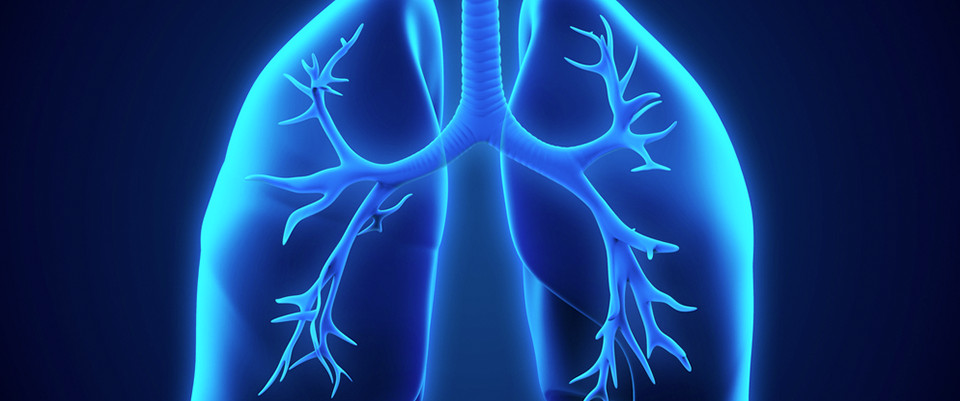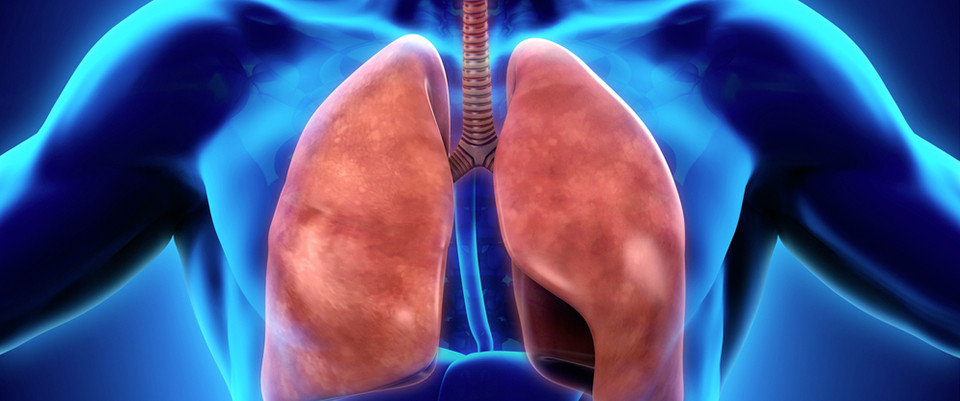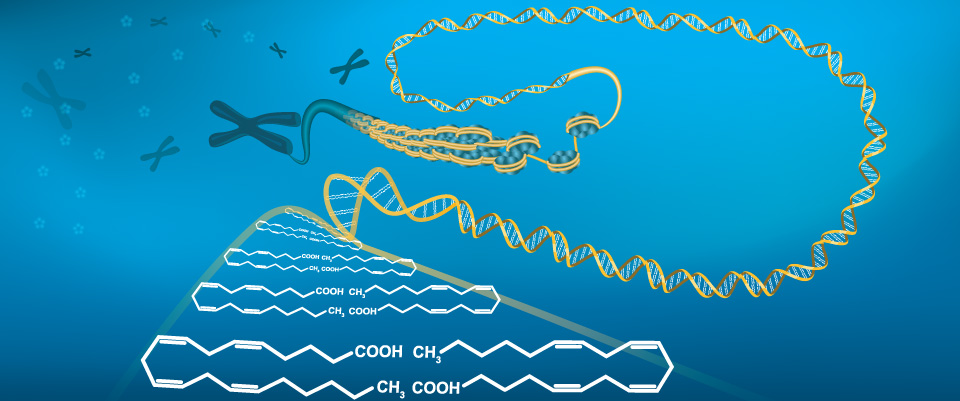PubMed
Immunogenic stress and death of cancer cells: Contribution of antigenicity vs adjuvanticity to immunosurveillance.
Related Articles
Immunogenic stress and death of cancer cells: Contribution of antigenicity vs adjuvanticity to immunosurveillance.
Immunol Rev. 2017 Nov;280(1):165-174
Authors: Bloy N, Garcia P, Laumont CM, Pitt JM, Sistigu A, Stoll G, Yamazaki T, Bonneil E, Buqué A, Humeau J, Drijfhout JW, Meurice G, Walter S, Fritsche J, Weinschenk T, Rammensee HG, Melief C, Thibault P, Perreault C, Pol J, Zitvogel L, Senovilla L, Kroemer G
Abstract
Cancer cells are subjected to constant selection by the immune system, meaning that tumors that become clinically manifest have managed to subvert or hide from immunosurveillance. Immune control can be facilitated by induction of autophagy, as well as by polyploidization of cancer cells. While autophagy causes the release of ATP, a chemotactic signal for myeloid cells, polyploidization can trigger endoplasmic reticulum stress with consequent exposure of the "eat-me" signal calreticulin on the cell surface, thereby facilitating the transfer of tumor antigens into dendritic cells. Hence, both autophagy and polyploidization cause the emission of adjuvant signals that ultimately elicit immune control by CD8(+) T lymphocytes. We investigated the possibility that autophagy and polyploidization might also affect the antigenicity of cancer cells by altering the immunopeptidome. Mass spectrometry led to the identification of peptides that were presented on major histocompatibility complex (MHC) class I molecules in an autophagy-dependent fashion or that were specifically exposed on the surface of polyploid cells, yet lost upon passage of such cells through immunocompetent (but not immunodeficient) mice. However, the preferential recognition of autophagy-competent and polyploid cells by the innate and cellular immune systems did not correlate with the preferential recognition of such peptides in vivo. Moreover, vaccination with such peptides was unable to elicit tumor growth-inhibitory responses in vivo. We conclude that autophagy and polyploidy increase the immunogenicity of cancer cells mostly by affecting their adjuvanticity rather than their antigenicity.
PMID: 29027230 [PubMed - in process]
Extracellular nucleosides and nucleotides as immunomodulators.
Related Articles
Extracellular nucleosides and nucleotides as immunomodulators.
Immunol Rev. 2017 Nov;280(1):83-92
Authors: Kepp O, Loos F, Liu P, Kroemer G
Abstract
Some anticancer agents induce immunogenic cell death that is accompanied by the emission of danger signals into the tumor microenvironment, thus attracting and activating innate immune effectors and finally inducing anticancer immunity. The release of extracellular nucleosides such as adenosine triphosphate (ATP) from the tumor in response to anticancer therapy plays a pivotal role in the attraction of antigen presenting cells and the activation of inflammasome-mediated proinflammatory cascades. In contrast, the ectonucleotidase-catalyzed phosphohydrolysis of nucleotides to nucleosides reduces the extracellular availability of nucleotides, hence limiting the recruitment and activation of antigen-presenting cells. In addition, the (over-)production of nucleosides including adenosine by ectonucleotidases located on cancer cells and regulatory T cells can induce immunosuppression, as adenosine directly inhibits the proliferation and activation of effector T cells. Here, we discuss the importance of death metabolites for immunomodulation in general, and the role of the purine nucleotide ATP and its derivative adenosine in particular. In addition, we provide an overview on therapeutic interventions that reinstate tumor immunogenicity in conditions where nucleotide-dependent immunostimulation is obstructed.
PMID: 29027229 [PubMed - in process]
Death, danger & immunity: Fundamental mechanisms linking pathogenic or iatrogenic cell death events to immune responses.
Related Articles
Death, danger & immunity: Fundamental mechanisms linking pathogenic or iatrogenic cell death events to immune responses.
Immunol Rev. 2017 Nov;280(1):5-7
Authors: Kroemer G
PMID: 29027215 [PubMed - in process]
Metabolic Responses of Eisenia Fetida to Individual Pb and Cd Contamination in Two Types of Soils.
Related Articles
Metabolic Responses of Eisenia Fetida to Individual Pb and Cd Contamination in Two Types of Soils.
Sci Rep. 2017 Oct 12;7(1):13110
Authors: Tang R, Ding C, Ma Y, Wang J, Zhang T, Wang X
Abstract
To characterize the potential toxicity of low Pb- and Cd-contaminated arable soils, earthworms were exposed to Pb contaminated ferrosol, cambosol or Cd contaminated ferrosol for two weeks. Polar metabolites of earthworms were detected by nuclear magnetic resonance. Data were then analyzed with principal component analysis followed by orthogonal signal correction-partial least squares-discriminant analysis and univariate analysis to determine possible mechanisms for the changes in metabolites. The survival rates, metal concentrations and bioaccumulation factor (BAF) of the earthworms were also measured and calculated as auxiliary data. The results showed that the metabolite profiles were highly similar in Pb-contaminated ferrosol and cambosol (R(2) = 0.76, p < 0.0001), which can be attributed to similar response mechanisms. However, there was a more intense response in ferrosol likely due to higher Pb concentrations in earthworms. Metabolic pathways and BAFs exhibited apparent distinctions between Pb- and Cd-contaminated ferrosol, likely because they bind to different bio-ligands. The affected metabolic pathways were involved in alanine-aspartate-glutamate, purine, glutathione, valine-leucine-isoleucine biosynthesis and degradation and nicotinate and nicotinamide metabolism. Regarding the bioavailability in earthworms, Pb availability was higher for ferrosol than for cambosol. We confirmed that the potential toxicity of low Pb/Cd-contaminated soils can be characterized using earthworm metabolomics.
PMID: 29026156 [PubMed - in process]
Effect of masticatory stimulation on the quantity and quality of saliva and the salivary metabolomic profile.
Related Articles
Effect of masticatory stimulation on the quantity and quality of saliva and the salivary metabolomic profile.
PLoS One. 2017;12(8):e0183109
Authors: Okuma N, Saita M, Hoshi N, Soga T, Tomita M, Sugimoto M, Kimoto K
Abstract
BACKGROUND: This study characterized the changes in quality and quantity of saliva, and changes in the salivary metabolomic profile, to understand the effects of masticatory stimulation.
METHODS: Stimulated and unstimulated saliva samples were collected from 55 subjects and salivary hydrophilic metabolites were comprehensively quantified using capillary electrophoresis-time-of-flight mass spectrometry.
RESULTS: In total, 137 metabolites were identified and quantified. The concentrations of 44 metabolites in stimulated saliva were significantly higher than those in unstimulated saliva. Pathway analysis identified the upregulation of the urea cycle and synthesis and degradation pathways of glycine, serine, cysteine and threonine in stimulated saliva. A principal component analysis revealed that the effect of masticatory stimulation on salivary metabolomic profiles was less dependent on sample population sex, age, and smoking. The concentrations of only 1 metabolite in unstimulated saliva, and of 3 metabolites stimulated saliva, showed significant correlation with salivary secretion volume, indicating that the salivary metabolomic profile and salivary secretion volume were independent factors.
CONCLUSIONS: Masticatory stimulation affected not only salivary secretion volume, but also metabolite concentration patterns. A low correlation between the secretion volume and these patterns supports the conclusion that the salivary metabolomic profile may be a new indicator to characterize masticatory stimulation.
PMID: 28813487 [PubMed - indexed for MEDLINE]
CPS1 maintains pyrimidine pools and DNA synthesis in KRAS/LKB1-mutant lung cancer cells.
Related Articles
CPS1 maintains pyrimidine pools and DNA synthesis in KRAS/LKB1-mutant lung cancer cells.
Nature. 2017 06 01;546(7656):168-172
Authors: Kim J, Hu Z, Cai L, Li K, Choi E, Faubert B, Bezwada D, Rodriguez-Canales J, Villalobos P, Lin YF, Ni M, Huffman KE, Girard L, Byers LA, Unsal-Kacmaz K, Peña CG, Heymach JV, Wauters E, Vansteenkiste J, Castrillon DH, Chen BPC, Wistuba I, Lambrechts D, Xu J, Minna JD, DeBerardinis RJ
Abstract
Metabolic reprogramming by oncogenic signals promotes cancer initiation and progression. The oncogene KRAS and tumour suppressor STK11, which encodes the kinase LKB1, regulate metabolism and are frequently mutated in non-small-cell lung cancer (NSCLC). Concurrent occurrence of oncogenic KRAS and loss of LKB1 (KL) in cells specifies aggressive oncological behaviour. Here we show that human KL cells and tumours share metabolomic signatures of perturbed nitrogen handling. KL cells express the urea cycle enzyme carbamoyl phosphate synthetase-1 (CPS1), which produces carbamoyl phosphate in the mitochondria from ammonia and bicarbonate, initiating nitrogen disposal. Transcription of CPS1 is suppressed by LKB1 through AMPK, and CPS1 expression correlates inversely with LKB1 in human NSCLC. Silencing CPS1 in KL cells induces cell death and reduces tumour growth. Notably, cell death results from pyrimidine depletion rather than ammonia toxicity, as CPS1 enables an unconventional pathway of nitrogen flow from ammonia into pyrimidines. CPS1 loss reduces the pyrimidine to purine ratio, compromises S-phase progression and induces DNA-polymerase stalling and DNA damage. Exogenous pyrimidines reverse DNA damage and rescue growth. The data indicate that the KL oncological genotype imposes a metabolic vulnerability related to a dependence on a cross-compartmental pathway of pyrimidine metabolism in an aggressive subset of NSCLC.
PMID: 28538732 [PubMed - indexed for MEDLINE]
Venomics analyses of the skin secretion of Dermatonotus muelleri: Preliminary proteomic and metabolomic profiling.
Related Articles
Venomics analyses of the skin secretion of Dermatonotus muelleri: Preliminary proteomic and metabolomic profiling.
Toxicon. 2017 May;130:127-135
Authors: Cavalcante ID, Antoniazzi MM, Jared C, Pires OR, Sciani JM, Pimenta DC
Abstract
Dermatonotus muelleri is the sole species of the Dermatonotus genus and inhabits Argentina, Bolivia, Brazil and Paraguay. This animal exhibits an explosive reproductive behavior during the Southern spring months, which lasts only for five days. Moreover, this animal displays specific adaptations to the habitat resulting in the energy conservation needed during either the intense reproduction period or times of estivation. During dry seasons and/or food shortages D. muelleri can survive because its food specialization and ability to dig an underground chamber for protection. Few literature is available on this amphibian and no biochemical characterization has ever been performed on the animal's skin secretion. This work, on the other hand, presents for the first time a venomic analysis of the major components present in the skin secretion of this microhylid. The crude skin secretion was obtained my mechanical stimulation and was analyzed according to one major criterion: >10 kDa or <10 kDa. The high molecular mass fraction was subjected to typical gel-based proteomic processing whereas the low molecular mass fraction was analyzed by liquid chromatography, mass spectrometry and nuclear magnetic resonance (NMR), yielding an overall 'venomics' approach. No classical/evident toxin was detected, but peptidases (metallo and serino) and structural proteins could be identified. In the low molecular mass fraction no peptides were detected, as well as no typical alkaloid or steroid. On the other hand, the amino acid tryptophan could be identified and a typical sugar spectrum was obtained in the NMR analyses. Altogether these findings point out to the fact that D. muelleri skin secretion is unique and the molecular arsenal present herein is yet to be explored; therefore, this venomics study is only the beginning.
PMID: 28249803 [PubMed - indexed for MEDLINE]
metabolomics; +20 new citations
20 new pubmed citations were retrieved for your search.
Click on the search hyperlink below to display the complete search results:
metabolomics
These pubmed results were generated on 2017/10/13PubMed comprises more than millions of citations for biomedical literature from MEDLINE, life science journals, and online books.
Citations may include links to full-text content from PubMed Central and publisher web sites.
metabolomics; +20 new citations
20 new pubmed citations were retrieved for your search.
Click on the search hyperlink below to display the complete search results:
metabolomics
These pubmed results were generated on 2017/10/13PubMed comprises more than millions of citations for biomedical literature from MEDLINE, life science journals, and online books.
Citations may include links to full-text content from PubMed Central and publisher web sites.
A combination of plasma phospholipid fatty acids and its association with incidence of type 2 diabetes: The EPIC-InterAct case-cohort study.
A combination of plasma phospholipid fatty acids and its association with incidence of type 2 diabetes: The EPIC-InterAct case-cohort study.
PLoS Med. 2017 Oct;14(10):e1002409
Authors: Imamura F, Sharp SJ, Koulman A, Schulze MB, Kröger J, Griffin JL, Huerta JM, Guevara M, Sluijs I, Agudo A, Ardanaz E, Balkau B, Boeing H, Chajes V, Dahm CC, Dow C, Fagherazzi G, Feskens EJM, Franks PW, Gavrila D, Gunter M, Kaaks R, Key TJ, Khaw KT, Kühn T, Melander O, Molina-Portillo E, Nilsson PM, Olsen A, Overvad K, Palli D, Panico S, Rolandsson O, Sieri S, Sacerdote C, Slimani N, Spijkerman AMW, Tjønneland A, Tumino R, van der Schouw YT, Langenberg C, Riboli E, Forouhi NG, Wareham NJ
Abstract
BACKGROUND: Combinations of multiple fatty acids may influence cardiometabolic risk more than single fatty acids. The association of a combination of fatty acids with incident type 2 diabetes (T2D) has not been evaluated.
METHODS AND FINDINGS: We measured plasma phospholipid fatty acids by gas chromatography in 27,296 adults, including 12,132 incident cases of T2D, over the follow-up period between baseline (1991-1998) and 31 December 2007 in 8 European countries in EPIC-InterAct, a nested case-cohort study. The first principal component derived by principal component analysis of 27 individual fatty acids (mole percentage) was the main exposure (subsequently called the fatty acid pattern score [FA-pattern score]). The FA-pattern score was partly characterised by high concentrations of linoleic acid, stearic acid, odd-chain fatty acids, and very-long-chain saturated fatty acids and low concentrations of γ-linolenic acid, palmitic acid, and long-chain monounsaturated fatty acids, and it explained 16.1% of the overall variability of the 27 fatty acids. Based on country-specific Prentice-weighted Cox regression and random-effects meta-analysis, the FA-pattern score was associated with lower incident T2D. Comparing the top to the bottom fifth of the score, the hazard ratio of incident T2D was 0.23 (95% CI 0.19-0.29) adjusted for potential confounders and 0.37 (95% CI 0.27-0.50) further adjusted for metabolic risk factors. The association changed little after adjustment for individual fatty acids or fatty acid subclasses. In cross-sectional analyses relating the FA-pattern score to metabolic, genetic, and dietary factors, the FA-pattern score was inversely associated with adiposity, triglycerides, liver enzymes, C-reactive protein, a genetic score representing insulin resistance, and dietary intakes of soft drinks and alcohol and was positively associated with high-density-lipoprotein cholesterol and intakes of polyunsaturated fat, dietary fibre, and coffee (p < 0.05 each). Limitations include potential measurement error in the fatty acids and other model covariates and possible residual confounding.
CONCLUSIONS: A combination of individual fatty acids, characterised by high concentrations of linoleic acid, odd-chain fatty acids, and very long-chain fatty acids, was associated with lower incidence of T2D. The specific fatty acid pattern may be influenced by metabolic, genetic, and dietary factors.
PMID: 29020051 [PubMed - in process]
Application of targeted metabolomics to investigate optimum growing conditions to enhance bioactive content of strawberry.
Application of targeted metabolomics to investigate optimum growing conditions to enhance bioactive content of strawberry.
J Agric Food Chem. 2017 Oct 11;:
Authors: Akhatou I, Sayago A, González-Domínguez R, Fernández-Recamales A
Abstract
A simple, sensitive and rapid assay based on liquid chromatography coupled to tandem mass spectrometry was designed for simultaneous quantitation of secondary metabolites in order to investigate the influence of variety and agronomic conditions on the biosynthesis of bioactive compounds in strawberry. For this purpose, strawberries belonging to three varieties with different sensitivity to environmental conditions ('Camarosa', 'Festival', 'Palomar') were grown in soilless system under multiple agronomic conditions (electrical conductivity, substrate type and coverage). Targeted metabolomic analysis of polyphenolic compounds, combined with advanced chemometric methods based on learning machines, revealed significant differences in multiple bioactives, such as chlorogenic acid, ellagic acid rhamnoside, sanguiin H10, quercetin 3-O-glucuronide, catechin, procyanidin B2, pelargonidin 3-O-glucoside, cyaniding 3-O-glucoside and pelargonidin 3-O-rutinoside, which play a pivotal role in organoleptic properties and beneficial healthy effects of these polyphenol-rich foods.
PMID: 29019668 [PubMed - as supplied by publisher]
Mass spectrometry-based metabolomics to identify taurine-modified metabolites in heart.
Mass spectrometry-based metabolomics to identify taurine-modified metabolites in heart.
Amino Acids. 2017 Oct 10;:
Authors: Ito T, Okazaki K, Nakajima D, Shibata D, Murakami S, Schaffer S
Abstract
Taurine is an abundant beta-amino acid found in high concentration in mammalian tissues. Taurine possesses many beneficial functions in mammalian cells. There are also a variety of taurine-conjugated products formed between taurine and bile acids, fatty acids, chloramine, mitochondrial tRNA, etc., and some of these have been identified as functional compounds. In the present study, we identified taurine-conjugated metabolites using LC-MS-based metabolome analysis of heart extracts prepared from hearts of wild-type and taurine transporter-knockout (TauTKO) mice, the latter being severely taurine deficient. Comparison analysis of metabolites identified taurine-containing dipeptides, including glutamyltaurine, aspartyltaurine, isoleucyltaurine, and leucyltaurine, which are present in wild-type but not TauTKO hearts. Acyltaurines (taurine-conjugated fatty acids) and taurine-conjugated bile acids were also detected, with levels unchanged in the TauTKO heart in comparison to the wild-type heart. These results demonstrate that taurine exists not only in the standard free form within the heart, but also in multiple conjugated forms, whose functions in the heart remain to be discovered.
PMID: 29019072 [PubMed - as supplied by publisher]
Asthma Endotypes and an Overview of Targeted Therapy for Asthma.
Asthma Endotypes and an Overview of Targeted Therapy for Asthma.
Front Med (Lausanne). 2017;4:158
Authors: Svenningsen S, Nair P
Abstract
Guidelines for the management of severe asthma do not emphasize the measurement of the inflammatory component of airway disease to indicate appropriate treatments or to monitor response to treatment. Inflammation is a central component of asthma and contributes to symptoms, physiological, and structural abnormalities. It can be assessed by a number of endotyping strategies based on "omics" technology such as proteomics, transcriptomics, and metabolomics. It can also be assessed using simple cellular responses by quantitative cytometry in sputum. Bronchitis may be eosinophilic, neutrophilic, mixed-granulocytic, or paucigranulocytic (eosinophils and neutrophils not elevated). Eosinophilic bronchitis is usually a Type 2 (T2)-driven process and therefore a sputum eosinophilia of greater than 3% usually indicates a response to treatment with corticosteroids or novel therapies directed against T2 cytokines such as IL-4, IL-5, and IL-13. Neutrophilic bronchitis represents a non-T2-driven disease, which is generally a predictor of response to antibiotics and may be a predictor to therapies targeted at pathways that lead to neutrophil recruitment such as TNF, IL-1, IL-6, IL-8, IL-23, and IL-17. Paucigranulocytic disease may not warrant anti-inflammatory therapy. These patients, whose symptoms may be driven largely by airway hyper-responsiveness may benefit from smooth muscle-directed therapies such as bronchial thermoplasty or mast-cell directed therapies. This review will briefly summarize the current knowledge regarding "omics-based signatures" and cellular endotyping of severe asthma and give an overview of segmentation of asthma therapeutics guided by the endotype.
PMID: 29018800 [PubMed]
Serum and Liver Tissue Metabonomic Study on Fatty Liver in Rats Induced by High-Fat Diet and Intervention Effects of Traditional Chinese Medicine Qushi Huayu Decoction.
Serum and Liver Tissue Metabonomic Study on Fatty Liver in Rats Induced by High-Fat Diet and Intervention Effects of Traditional Chinese Medicine Qushi Huayu Decoction.
Evid Based Complement Alternat Med. 2017;2017:6242697
Authors: Gou XJ, Feng Q, Fan LL, Zhu J, Hu YY
Abstract
Qushi Huayu Decoction (QSHY), clinically derived, consists of five crude drugs, commonly used in treating fatty liver in a clinical setting. However, little is known about its metabolomics study. Herein, the serum and liver tissue metabolomics approach, based on gas chromatography coupled to spectrometry (GC/MS), was employed to evaluate the efficacy and the mechanism underlying QSHY in a rat model of high-fat diet-induced fatty liver. With pattern recognition analysis of serum and liver tissue metabolite profile, a clear separation of model group and control group was acquired for serum and liver tissue samples, respectively. The QSHY group showed a predisposition towards recovery mimicking the control group, which was in agreement with the biochemical alterations and histological results. 23 candidate biomarkers were identified in the serum and liver tissue samples that were utilized for exploring the underlying mechanism. The present study suggests that QSHY has significant anti-fatty liver effects on high-fat diet-induced fatty liver in rats, which might be attributed to regulating the dysfunction of beta-alanine metabolism, alanine, aspartate, and glutamate metabolism, glycine, serine, and threonine metabolism, pyruvate metabolism, and citrate cycle. Thus, metabolomics is a useful tool in the evaluation of the efficacy and elucidation of the mechanism underlying the complex traditional Chinese medicine prescriptions.
PMID: 29018486 [PubMed]
Comparative Analysis of Compatibility Effects on Invigorating Blood Circulation for Cyperi Rhizoma Series of Herb Pairs Using Untargeted Metabolomics.
Comparative Analysis of Compatibility Effects on Invigorating Blood Circulation for Cyperi Rhizoma Series of Herb Pairs Using Untargeted Metabolomics.
Front Pharmacol. 2017;8:677
Authors: Liu P, Shang EX, Zhu Y, Yu JG, Qian DW, Duan JA
Abstract
The mutual-assistance compatibility of Cyperi Rhizoma (Xiangfu, XF) and Angelicae Sinensis Radix (Danggui, DG), Chuanxiong Rhizoma (Chuanxiong, CX), Paeoniae Radix Alba (Baishao, BS), or Corydalis Rhizoma (Yanhusuo, YH), found in a traditional Chinese medicine (TCM) named Xiang-Fu-Si-Wu Decoction (XFSWD), can produce synergistic and promoting blood effects. Nowadays, XFSWD has been proved to be effective in activating blood circulation and dissipating blood stasis. However, the role of the herb pairs synergistic effects in the formula were poorly understood. In order to quantitatively assess the compatibility effects of herb pairs, mass spectrometry-based untargeted metabolomics studies were performed. The plasma and urine metabolic profiles of acute blood stasis rats induced by adrenaline hydrochloride and ice water and administered with Cyperi Rhizoma-Angelicae Sinensis Radix (XD), Cyperi Rhizoma-Chuanxiong Rhizoma (XC), Cyperi Rhizoma-Paeoniae Radix Alba (XB), Cyperi Rhizoma-Corydalis Rhizoma (XY) were compared. Relative peak area of identified metabolites was calculated and principal component analysis (PCA) score plot from the potential markers was used to visualize the overall differences. Then, the metabolites results were used with biochemistry indicators and genes expression values as parameters to quantitatively evaluate the compatibility effects of XF series of herb pairs by PCA and correlation analysis. The collective results indicated that the four XF herb pairs regulated glycerophospholipid metabolism, steroid hormone biosynthesis and arachidonic acid metabolism pathway. XD was more prominent in regulating the blood stasis during the four XF herb pairs. This study demonstrated that metabolomics was a useful tool to efficacy evaluation and compatibility effects of TCM elucidation.
PMID: 29018346 [PubMed]
Cerebrospinal Fluid Amino Acid Profiling of Pediatric Cases with Tuberculous Meningitis.
Cerebrospinal Fluid Amino Acid Profiling of Pediatric Cases with Tuberculous Meningitis.
Front Neurosci. 2017;11:534
Authors: Mason S, Reinecke CJ, Solomons R
Abstract
Background: In Africa, tuberculosis is generally regarded as persisting as one of the most devastating infectious diseases. The pediatric population is particularly vulnerable, with infection of the brain in the form of tuberculous meningitis (TBM) being the most severe manifestation. TBM is often difficult to diagnose in its early stages because of its non-specific clinical presentation. Of particular concern is that late diagnosis, and subsequent delayed treatment, leads to high risk of long-term neurological sequelae, and even death. Using advanced technology and scientific expertise, we are intent on further describing the biochemistry behind this devastating neuroinflammatory disease, with the goal of improving upon its early diagnosis. Method: We used the highly sensitive analytical platform of gas chromatography-mass spectrometry (GC-MS) to analyze amino acid profiles of cerebrospinal fluid (CSF) collected from a cohort of 33 South African pediatric TBM cases, compared to 34 controls. Results: Through the use of a stringent quality assurance procedure and various statistical techniques, we were able to confidently identify five amino acids as being significantly elevated in TBM cases, namely, alanine, asparagine, glycine, lysine, and proline. We found also in an earlier untargeted metabolomics investigation that alanine can be attributed to increased CSF lactate levels, and lysine as a marker of lipid peroxidation. Alanine, like glycine, is an inhibitory neurotransmitter in the brain. Asparagine, as with proline, is linked to the glutamate-glutamine cycle. Asparagine is associated with the removal of increased nitrites in the brain, whereas elevated proline coincides with the classic biochemical marker of increased CSF protein in TBM. All five discriminatory amino acids are linked to ammonia due to increased nitrites in TBM. Conclusion: A large amount of untapped biochemical information is present in CSF of TBM cases, of which amino acid profiling through GC-MS has potential in aiding in earlier diagnosis, and hence crucial earlier treatment.
PMID: 29018323 [PubMed]
Endotoxin Preconditioning Reprograms S1 Tubules and Macrophages to Protect the Kidney.
Endotoxin Preconditioning Reprograms S1 Tubules and Macrophages to Protect the Kidney.
J Am Soc Nephrol. 2017 Oct 10;:
Authors: Hato T, Zollman A, Plotkin Z, El-Achkar TM, Maier BF, Pay SL, Dube S, Cabral P, Yoshimoto M, McClintick J, Dagher PC
Abstract
Preconditioning with a low dose of endotoxin confers unparalleled protection against otherwise lethal models of sepsis. The mechanisms of preconditioning have been investigated extensively in isolated immune cells such as macrophages. However, the role of tissue in mediating the protective response generated by preconditioning remains unknown. Here, using the kidney as a model organ, we investigated cell type-specific responses to preconditioning. Compared with preadministration of vehicle, endotoxin preconditioning in the cecal ligation and puncture mouse model of sepsis led to significantly enhanced survival and reduced bacterial load in several organs. Furthermore, endotoxin preconditioning reduced serum levels of proinflammatory cytokines, upregulated molecular pathways involved in phagocytosis, and prevented the renal function decline and injury induced in mice by a toxic dose of endotoxin. The protective phenotype involved the clustering of macrophages around S1 segments of proximal tubules, and full renal protection required both macrophages and renal tubular cells. Using unbiased S1 transcriptomic and tissue metabolomic approaches, we identified multiple protective molecules that were operative in preconditioned animals, including molecules involved in antibacterial defense, redox balance, and tissue healing. We conclude that preconditioning reprograms macrophages and tubules to generate a protective environment, in which tissue health is preserved and immunity is controlled yet effective. Endotoxin preconditioning can thus be used as a discovery platform, and understanding the role and participation of both tissue and macrophages will help refine targeted therapies for sepsis.
PMID: 29018138 [PubMed - as supplied by publisher]
Neuronal SIRT1 (Silent Information Regulator 2 Homologue 1) Regulates Glycolysis and Mediates Resveratrol-Induced Ischemic Tolerance.
Neuronal SIRT1 (Silent Information Regulator 2 Homologue 1) Regulates Glycolysis and Mediates Resveratrol-Induced Ischemic Tolerance.
Stroke. 2017 Oct 10;:
Authors: Koronowski KB, Khoury N, Saul I, Loris ZB, Cohan CH, Stradecki-Cohan HM, Dave KR, Young JI, Perez-Pinzon MA
Abstract
BACKGROUND AND PURPOSE: Resveratrol, at least in part via SIRT1 (silent information regulator 2 homologue 1) activation, protects against cerebral ischemia when administered 2 days before injury. However, it remains unclear if SIRT1 activation must occur, and in which brain cell types, for the induction of neuroprotection. We hypothesized that neuronal SIRT1 is essential for resveratrol-induced ischemic tolerance and sought to characterize the metabolic pathways regulated by neuronal Sirt1 at the cellular level in the brain.
METHODS: We assessed infarct size and functional outcome after transient 60 minute middle cerebral artery occlusion in control and inducible, neuronal-specific SIRT1 knockout mice. Nontargeted primary metabolomics analysis identified putative SIRT1-regulated pathways in brain. Glycolytic function was evaluated in acute brain slices from adult mice and primary neuronal-enriched cultures under ischemic penumbra-like conditions.
RESULTS: Resveratrol-induced neuroprotection from stroke was lost in neuronal Sirt1 knockout mice. Metabolomics analysis revealed alterations in glucose metabolism on deletion of neuronal Sirt1, accompanied by transcriptional changes in glucose metabolism machinery. Furthermore, glycolytic ATP production was impaired in acute brain slices from neuronal Sirt1 knockout mice. Conversely, resveratrol increased glycolytic rate in a SIRT1-dependent manner and under ischemic penumbra-like conditions in vitro.
CONCLUSIONS: Our data demonstrate that resveratrol requires neuronal SIRT1 to elicit ischemic tolerance and identify a novel role for SIRT1 in the regulation of glycolytic function in brain. Identification of robust neuroprotective mechanisms that underlie ischemia tolerance and the metabolic adaptations mediated by SIRT1 in brain are crucial for the translation of therapies in cerebral ischemia and other neurological disorders.
PMID: 29018134 [PubMed - as supplied by publisher]
More than Enzymes That Make or Break Cyclic Di-GMP-Local Signaling in the Interactome of GGDEF/EAL Domain Proteins of Escherichia coli.
More than Enzymes That Make or Break Cyclic Di-GMP-Local Signaling in the Interactome of GGDEF/EAL Domain Proteins of Escherichia coli.
MBio. 2017 Oct 10;8(5):
Authors: Sarenko O, Klauck G, Wilke FM, Pfiffer V, Richter AM, Herbst S, Kaever V, Hengge R
Abstract
The bacterial second messenger bis-(3'-5')-cyclic diguanosine monophosphate (c-di-GMP) ubiquitously promotes bacterial biofilm formation. Intracellular pools of c-di-GMP seem to be dynamically negotiated by diguanylate cyclases (DGCs, with GGDEF domains) and specific phosphodiesterases (PDEs, with EAL or HD-GYP domains). Most bacterial species possess multiple DGCs and PDEs, often with surprisingly distinct and specific output functions. One explanation for such specificity is "local" c-di-GMP signaling, which is believed to involve direct interactions between specific DGC/PDE pairs and c-di-GMP-binding effector/target systems. Here we present a systematic analysis of direct protein interactions among all 29 GGDEF/EAL domain proteins of Escherichia coli Since the effects of interactions depend on coexpression and stoichiometries, cellular levels of all GGDEF/EAL domain proteins were also quantified and found to vary dynamically along the growth cycle. Instead of detecting specific pairs of interacting DGCs and PDEs, we discovered a tightly interconnected protein network of a specific subset or "supermodule" of DGCs and PDEs with a coregulated core of five hyperconnected hub proteins. These include the DGC/PDE proteins representing the c-di-GMP switch that turns on biofilm matrix production in E. coli Mutants lacking these core hub proteins show drastic biofilm-related phenotypes but no changes in cellular c-di-GMP levels. Overall, our results provide the basis for a novel model of local c-di-GMP signaling in which a single strongly expressed master PDE, PdeH, dynamically eradicates global effects of several DGCs by strongly draining the global c-di-GMP pool and thereby restricting these DGCs to serving as local c-di-GMP sources that activate specific colocalized effector/target systems.IMPORTANCE c-di-GMP signaling in bacteria is believed to occur via changes in cellular c-di-GMP levels controlled by antagonistic and potentially interacting pairs of diguanylate cyclases (DGCs) and c-di-GMP phosphodiesterases (PDEs). Our systematic analysis of protein-protein interaction patterns of all 29 GGDEF/EAL domain proteins of E. coli, together with our measurements of cellular c-di-GMP levels, challenges both aspects of this current concept. Knocking out distinct DGCs and PDEs has drastic effects on E. coli biofilm formation without changing the cellular c-di-GMP level. In addition, rather than generally coming in interacting DGC/PDE pairs, a subset of DGCs and PDEs operates as central interaction hubs in a larger "supermodule," with other DGCs and PDEs behaving as "lonely players" without contacts to other c-di-GMP-related enzymes. On the basis of these data, we propose a novel concept of "local" c-di-GMP signaling in bacteria with multiple enzymes that make or break the second messenger c-di-GMP.
PMID: 29018125 [PubMed - in process]
Integrated profiling of global metabolomic and transcriptomic responses to viral hemorrhagic septicemia virus infection in olive flounder.
Integrated profiling of global metabolomic and transcriptomic responses to viral hemorrhagic septicemia virus infection in olive flounder.
Fish Shellfish Immunol. 2017 Oct 07;:
Authors: Cho SY, Kwon YK, Nam M, Vaidya B, Kim SR, Lee S, Kwon J, Kim D, Hwang GS
Abstract
Viral hemorrhagic septicemia virus (VHSV) is one of the most serious viral pathogen that infects farmed fish. In this study, we measured the replication of VHSV increased steadily at 9, 24, 72, and 120 h after infection and progression of necrosis was observed at 72 hpi. We performed transcriptomic and metabolomics profiling of kidney tissues collected at each infection time using Illumina HiSeq2000 and ultra-performance liquid chromatography/quadrupole time-of-flight mass spectroscopy to investigate the mechanisms of VHSV infection in the kidneys of olive flounder. A total of 13,862 mRNA molecules and 72 metabolites were selected to identify the mechanisms of infection and they were integrated using KEGG pathway database. Six KEGG metabolic pathways, including carbohydrate metabolism, amino acid metabolism, lipid metabolism, transport and catabolism, metabolism of cofactors and vitamins, and energy metabolism, were significantly suppressed, whereas the immune system was activated by VHSV infection. A decrease in levels of amino acids such as valine, leucine, and isoleucine, as well as in their derivative carnitines, was observed after VHSV infection. In addition, an increase in arachidonic acid level was noted. Integrated analysis of transcriptome and metabolome using KEGG pathway database revealed four types of responses in the kidneys of olive flounder to VHSV infection. Among these, the mechanisms related to the immune system and protein synthesis were activated, whereas ATP synthesis and the antioxidant system activity were suppressed. This is the first study describing the mechanisms of metabolic responses to VHSV infection in olive flounder. The results suggest that the suppression of ATP synthesis and antioxidant systems, such as glutathione and peroxisome signaling, could be the cause of necrosis, whereas the activation of the immune system could result in the inflammation of kidney tissue in VHSV-infected olive flounder.
PMID: 29017947 [PubMed - as supplied by publisher]











